
45 Interesting Facts about Planets and Other Objects in the Solar System
Did you know that you can see five planets from Earth without a telescope or binoculars? In fact, not all of the bright objects that you see in the night sky are stars, some are actually planets! What about the Sun? Is it a planet or a star? In this lesson, we are going to explore our space and learn all about the planets and the Solar System.
What is the Solar System?
The solar system is a huge space that consists of the Sun, the planets, and other objects. Other objects in the solar system include moons, comets, asteroids, dwarf planets, dust, and gas. All planets and objects in the solar system orbit, or travel around, the Sun. However, most of the solar system is empty space even with all these objects.
The solar system itself is part of a galaxy called the Milky Way. A galaxy is a huge system of stars, gas, dust, and other objects that are held together by a pulling force called gravity. The solar system with all its objects orbits the centre of the Milky Way galaxy. The universe is in fact made up of billions of galaxies that were formed billions of years ago when the universe began.

Table of Contents
How the Solar System Formed
The solar system was formed about 4.7 billion years ago. Scientists think that it started as a cloud of gas and dust, and then gravity pulled parts of the cloud together into clumps. The gravity pressed the largest clump so tightly that it got so hot. This clump then became the Sun. The other clumps became planets over millions of years. The powerful gravity of the Sun pulled the planets and made them orbit the Sun. Some of the leftover clumps became asteroids, comets, and other objects in the solar system.
The Sun
The Sun is the star at the centre of the solar system and the largest object in it. It is a hot ball of gases, mainly hydrogen and helium, and it gives off a great amount of energy. It is around 4.5 billion years old. This means the Sun is at the middle of its life cycle. The next stage of the Sun’s life cycle will occur in roughly 5 billion years. The Sun will become a big, cooler star called a Red Giant. After that, the Sun will shrink to around the same size as the Earth and it will be known as a small White Dwarf star.
The Sun’s diameter is 1,392,000 kilometres (865,000 miles). The Sun alone contains about 99% of all the material in the solar system. The temperature at the Sun’s core is more than 15,600,000° C (28,080,000° F). All planets, comets, and asteroids in the solar system orbit the sun. Life on Earth depends on heat and light from the Sun, and it would not exist without the Sun. The Sun is known as a Yellow Dwarf star.

The Planets
There are eight planets orbiting the Sun in the solar system. These planets are: Mercury, Venus, Earth, Mars, Jupiter, Saturn, Uranus, and Neptune.
How To Remember The Planets
The easiest way to remember the planets is by memorizing the order that they are in. Try using these two useful sentences to remember the order of the planets: “My Very Easy Method Just Speeds Up Naming” or “My Very Educated Mother Just Served Us Noodles.” If you want to remember the size of the planets from big to small, use this sentence; “Just Sit Up Now Each Monday Morning.” Let’s explore each planet in detail!
Mercury
Mercury is the closest planet to the Sun, and the smallest planet in the solar system. It orbits the Sun faster than any other planet does. Mercury is a rocky planet that looks much like our moon, and it has so many craters. It completes one orbit around the Sun every 88 Earth days, and it takes around 59 Earth days to complete one rotation about its centre. Mercury has no moons.
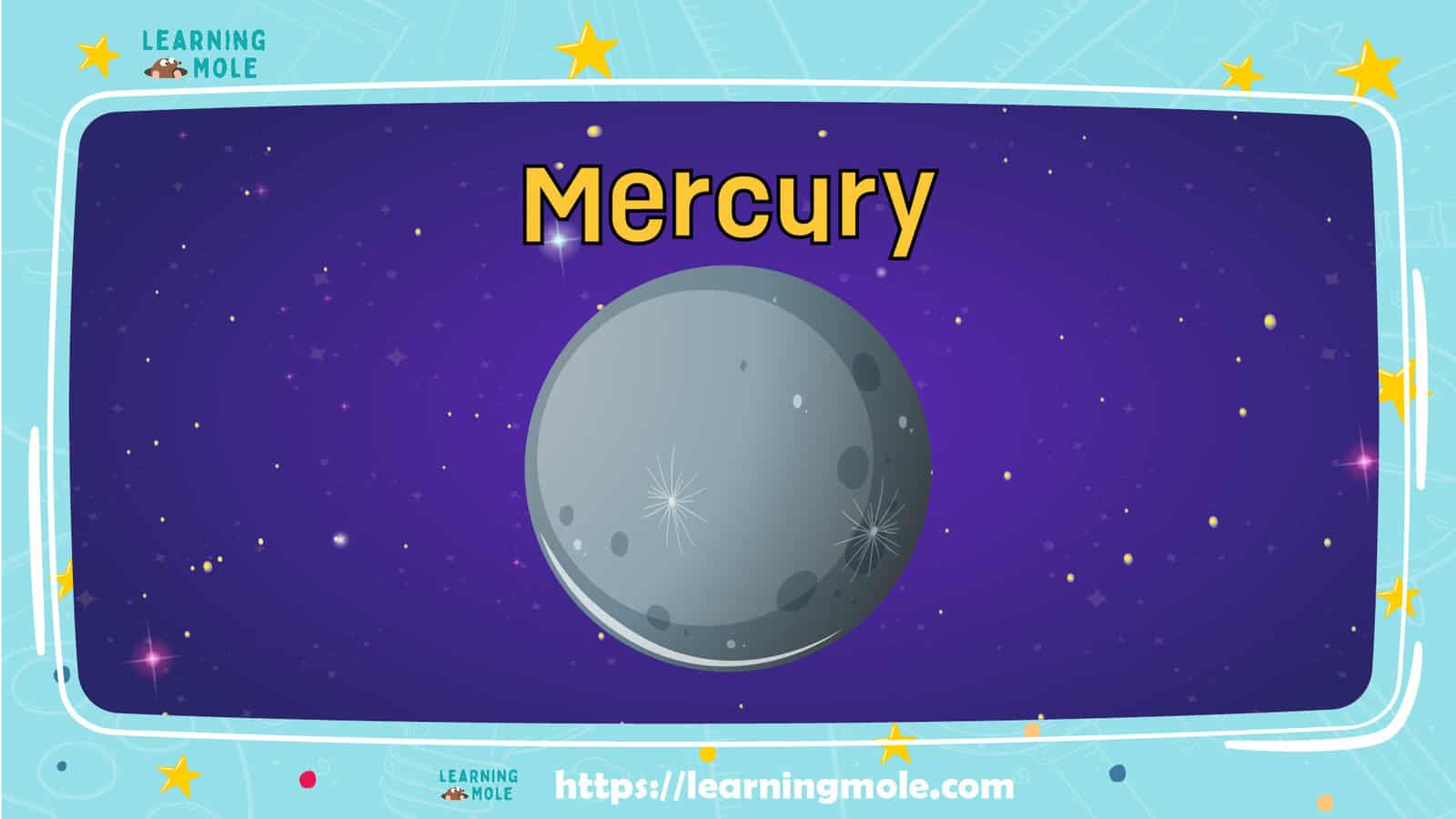
Venus
Venus is the second planet from the Sun, and the closest planet to Earth. It is also the brightest object in the night sky as seen from Earth. Venus is the hottest planet in the solar system even though it is not the closest to the Sun because it has a thick atmosphere.
Venus is about the same size and weight as Earth, yet it is only slightly smaller. It is a rocky planet. Its surface contains so many volcanoes. Venus takes 225 Earth days to complete one orbit around the Sun, and it takes 243 Earth days to complete one rotation about its centre. It has the slowest rotation of any other planet. Like Mercury, Venus has no moons.
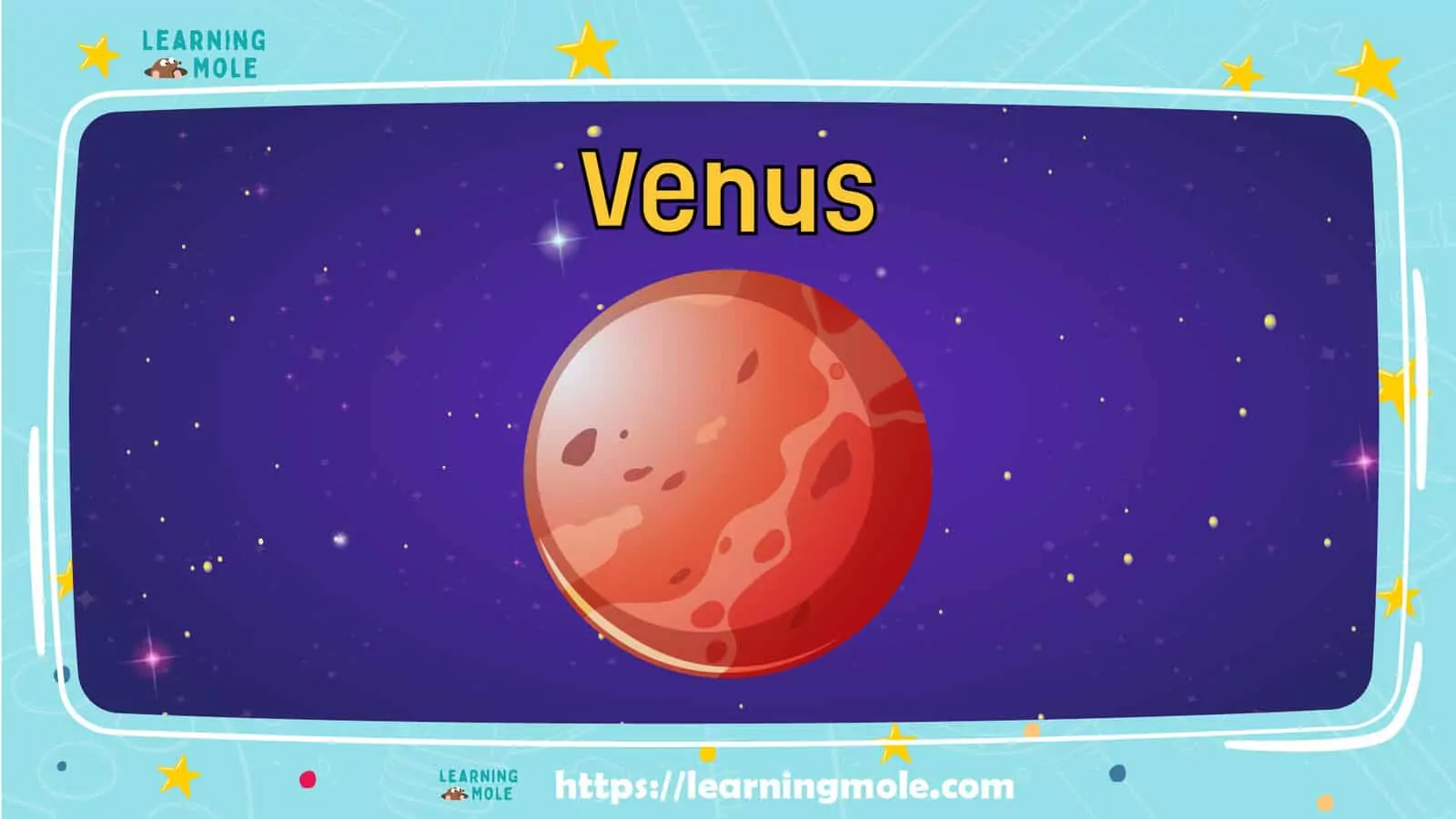
Earth
Earth is the planet that we live on, and it is the only living planet in the solar system. It is the third planet from the Sun, between Venus and Mars, and the fifth largest planet in the solar system. Earth is a rocky planet, and it is the largest one among the rocky planets.
The surface of Earth is either water or land. Water covers about 70% of Earth’s surface. The other 30% of Earth’s surface is covered with land. There are layers of gases surrounding Earth called the atmosphere. The atmosphere helps maintain temperatures on Earth so that they are warm enough for us to survive. Earth completes one orbit around the Sun in 365 days, and it completes one rotation about its centre in 24 hours. There is only one moon orbiting Earth called the Moon.
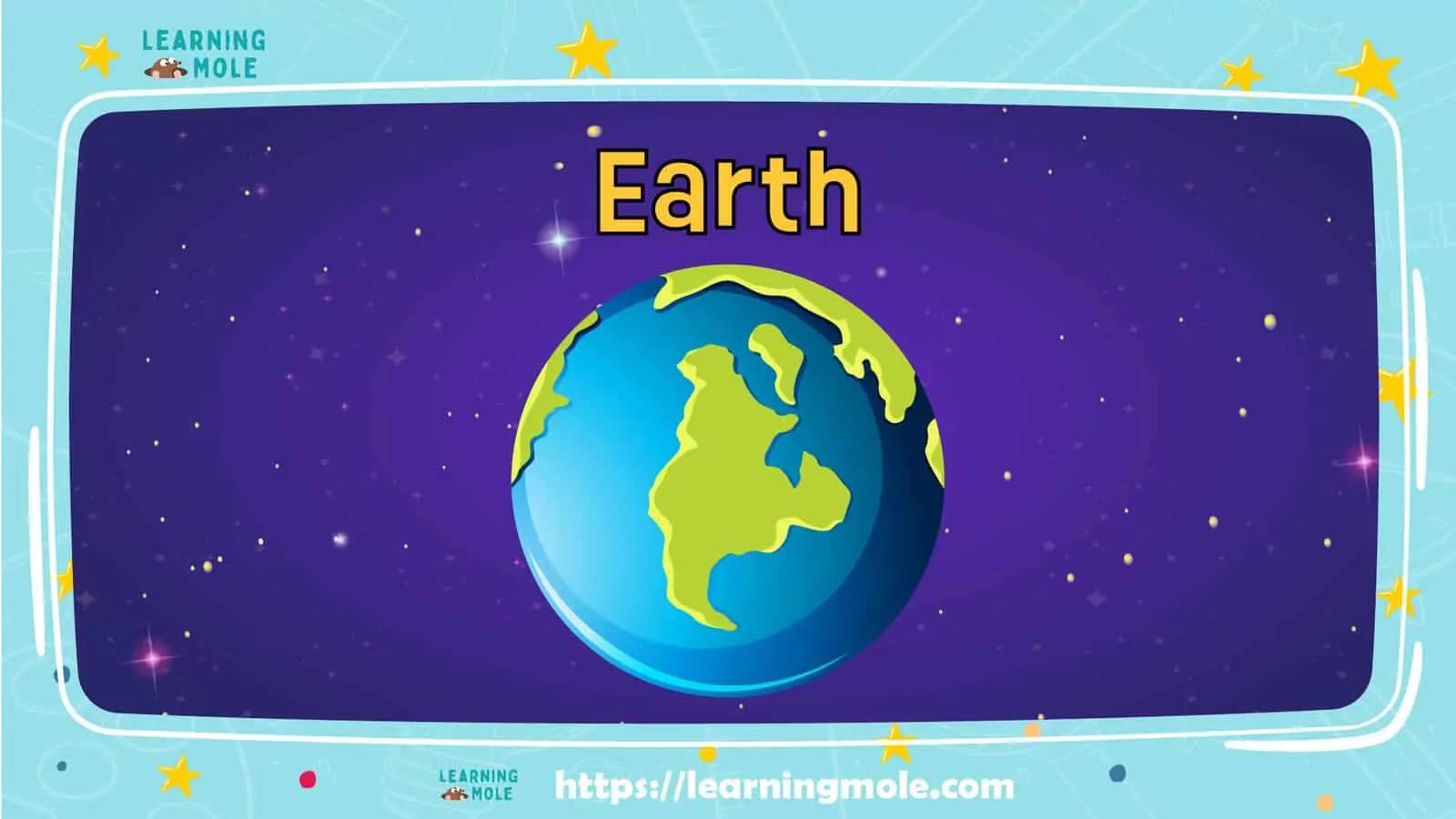
The Moon
The Moon is the only natural satellite, or moon, that orbits Earth. It takes the Moon about 27 days to complete one orbit around Earth. It takes the same time, too, to rotate about its centre. The Moon is the second brightest object in our sky after the Sun, and the brightest one at night. However, it does not produce its own light, but it only reflects light from the Sun.
Most of the Moon’s surface is rock. It is also covered with craters and dead volcanoes. Temperatures on the Moon vary from super-hot to super cold because it has no atmosphere. The forces of gravity between the Earth and the Moon cause some interesting effects, such as the ocean tides. The Moon is the only object in space that has been visited by humans.
The phases of the Moon are the eight different ways the Moon looks from Earth. Although the Moon looks different every night, it doesn’t actually change shape. These different shapes of the Moon that we see during the month are called the Moon’s phases. Without the Sun, the Moon would be completely dark. The shape of the Moon we see depends on the amount of light the Sun reflects off it. It takes the Moon 29.5 days to go through its eight different phases. This is called a lunar month.
Mars
Mars is the fourth planet from the Sun, between Earth and Jupiter. It is the second smallest planet in the solar system, after Mercury. In fact, Mars is about half the size of Earth. It can be seen from Earth without telescopes or binoculars. Mars is called the “Red Planet” because its colour is red.
Mars is simply a cold desert. It is a rocky planet with complex terrain on its surface, such as mountains and volcanoes. It has a thin atmosphere, so temperatures on Mars change between highs and lows. Scientists believe that there might have been water on Mars a long time ago. Mars completes one orbit around the Sun in 687 Earth days. It rotates about its centre in 24 hours and 37 minutes. Humans have sent many spacecrafts to explore Mars, but humans themselves have not been to Mars yet. Mars has two tiny moons named Phobos and Deimos.
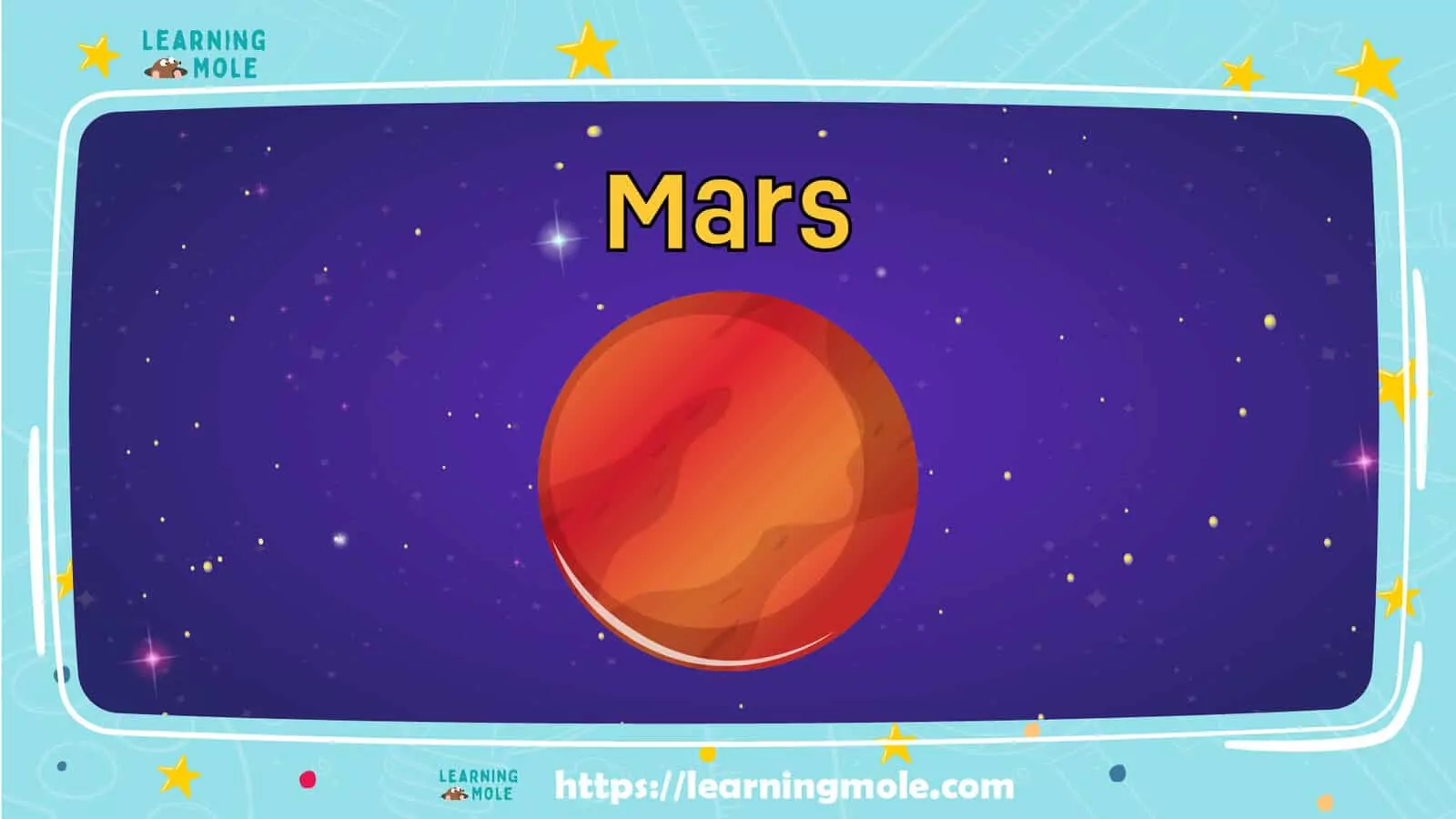
Jupiter
Jupiter is the fifth planet from the Sun, between Mars and Saturn, and the largest planet in the solar system. It is so huge that it could easily swallow all of the other planets. It is a gas giant planet, and it is actually very similar to a star. It consists entirely of gases, mainly hydrogen and helium, which means that it has no solid surface. Jupiter is the third brightest object in the sky, after the Moon and Venus.
Jupiter’s vivid colours are probably a result of chemical interactions in its huge and thick atmosphere. The most interesting feature of Jupiter is a spot called “The Great Red Spot,” which is actually a huge storm. It takes Jupiter about 12 Earth years to complete an orbit around the Sun, and less than 10 hours to complete a rotation about its centre. Scientists think that Jupiter has 79 known moons until now. It also has 3 ring systems surrounding it, but they are thin and hard to see.
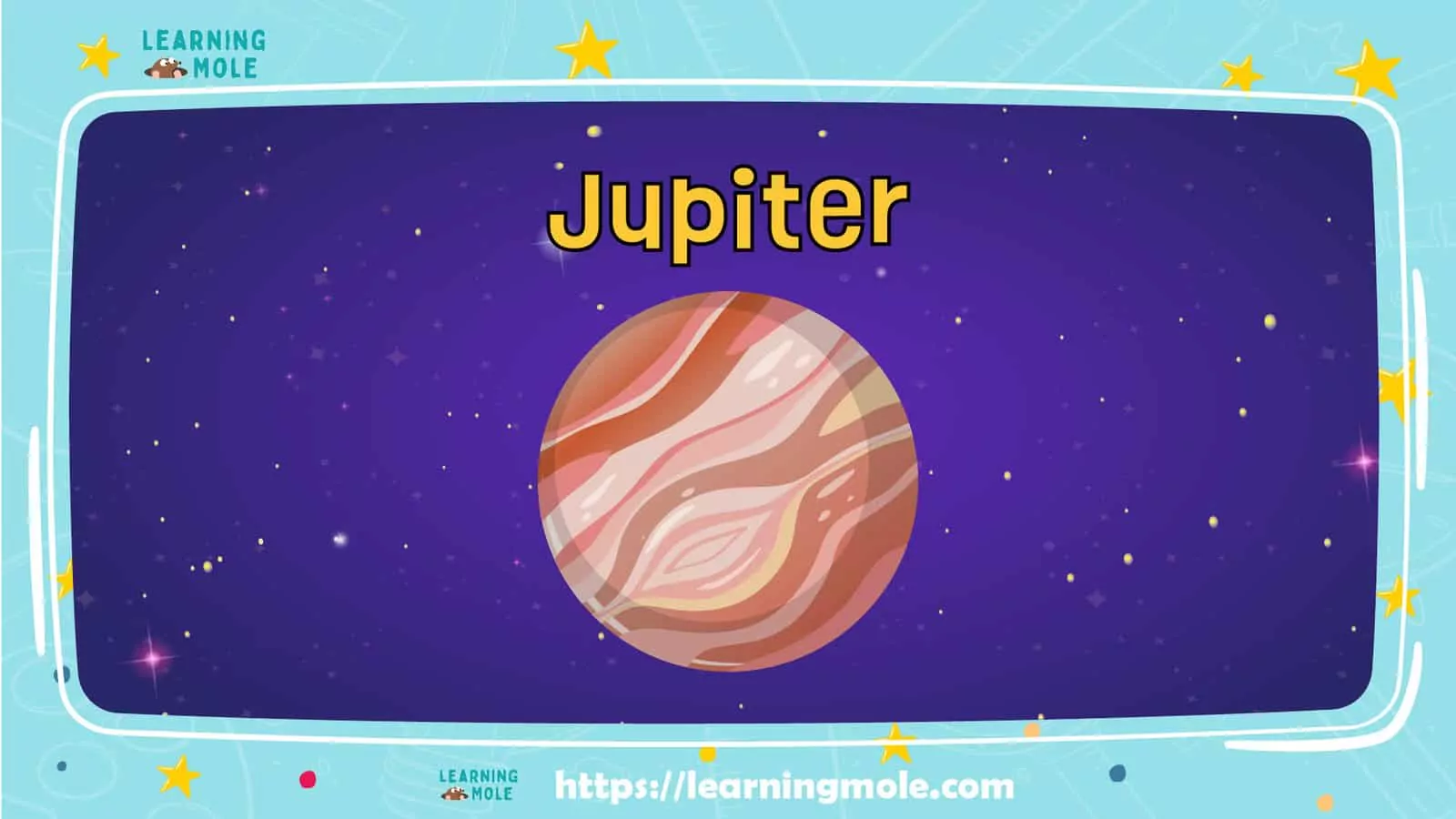
Saturn
Saturn is the sixth planet from the Sun, between Jupiter and Uranus, and it is the second largest planet in the solar system, after Jupiter. Like Jupiter, Saturn is a gas giant planet that is made up of gases, mostly hydrogen and helium. This means that it does not have a solid surface. Its atmosphere is huge, and it consists of gases.
Saturn is most famous for the beautiful rings surrounding it. Those rings are thin and bright, and they can be seen from Earth with a telescope. Saturn has 82 moons, 53 of which are known and named, and the other 29 are awaiting confirmation. Saturn completes an orbit around the Sun in about 29 Earth years, and it completes a rotation about its centre in 10.7 hours.
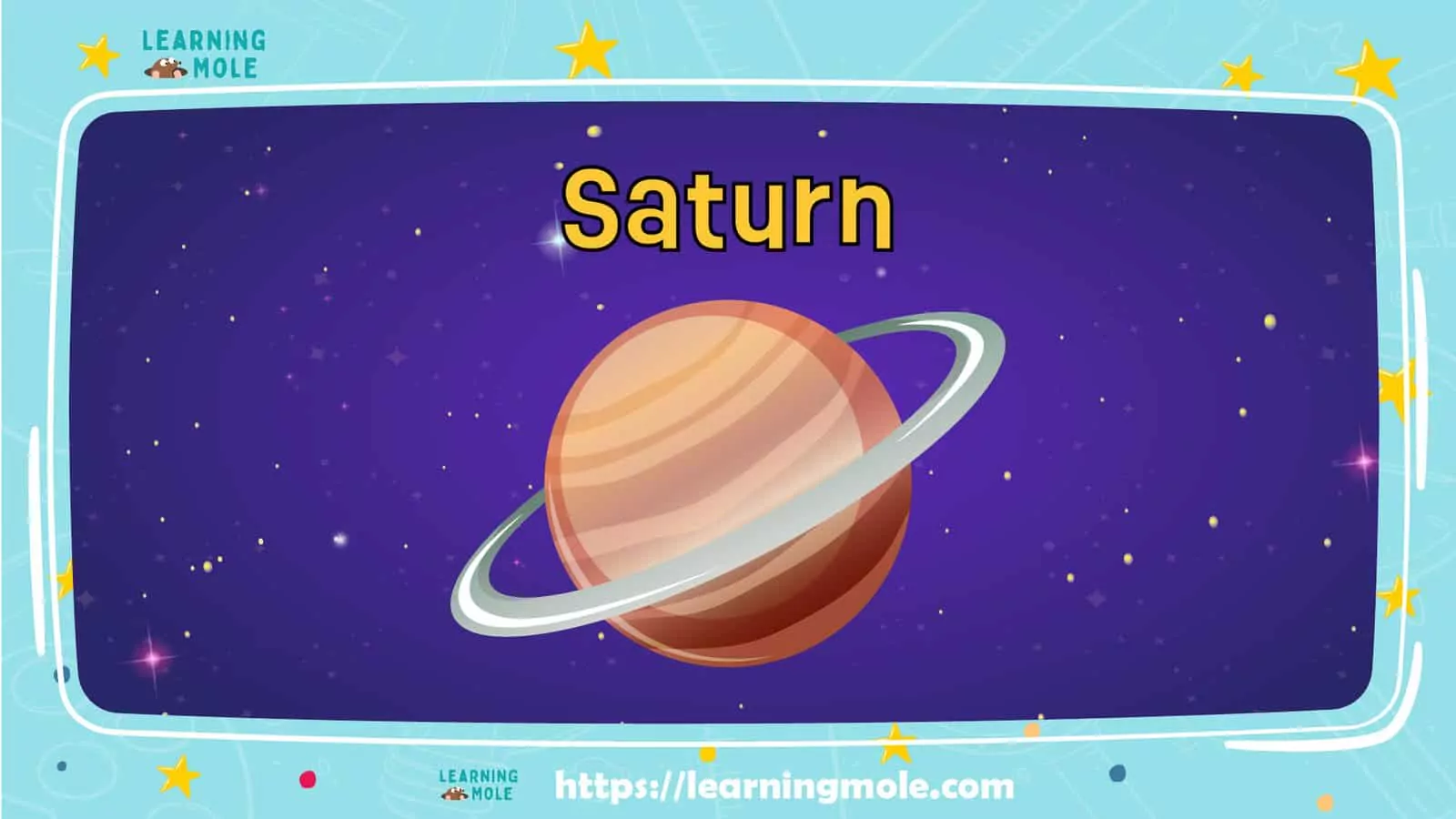
Uranus
Uranus is the seventh planet from the Sun, between Saturn and Neptune, and it is the third largest planet in the solar system. It is a gas-giant planet, meaning that it consists of gases, and it does not have a solid surface. The atmosphere of Uranus is the coldest atmosphere in the solar system. It contains a gas called methane, which gives the planet a bright blue colour.
Uranus completes an orbit around the Sun in about 84 Earth years. It completes one rotation about its centre in about 17 hours. There are 13 rings surrounding Uranus, but they are not as bright as Saturn’s rings. Scientists have also confirmed 27 moons orbiting Uranus until now. All of those moons are small.
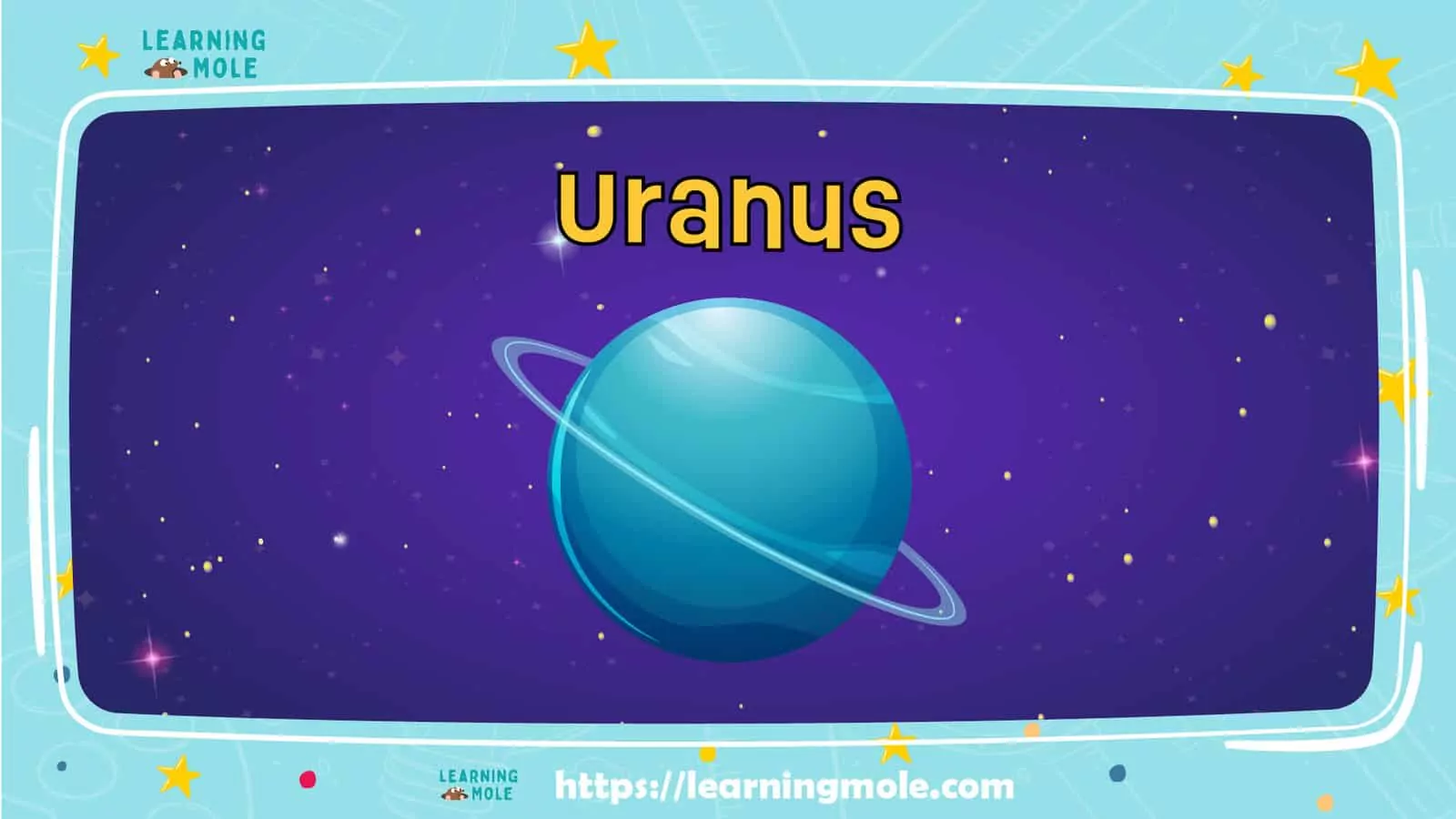
Neptune
Neptune is the eighth, and farthest, planet from the Sun, which makes Uranus its only neighbour. It is a gas giant planet, meaning that it is made up of gases, mainly hydrogen and helium, and it does not have a solid surface. It is the fourth largest planet in the solar system and the smallest one among the gas giants. Neptune is very similar to Uranus in terms of size, mass and composition. So, they are referred to as twin planets, or, sometimes, ice giants. Neptune is a dark, cold, and stormy world.
Neptune’s atmosphere is thick and windy. In fact, Neptune’s winds are the fastest and the wildest in the solar system; they could reach up to 2000 km per hour. Sometimes huge storms cause dark spots to form in the atmosphere. Because it is very far from the Sun, temperatures on Neptune are extremely low. Neptune completes an orbit around the Sun in about 165 Earth years and a rotation about its centre in about 16 hours. Neptune has 14 known moons orbiting it. It also has 6 narrow rings surrounding it, but they are faint.
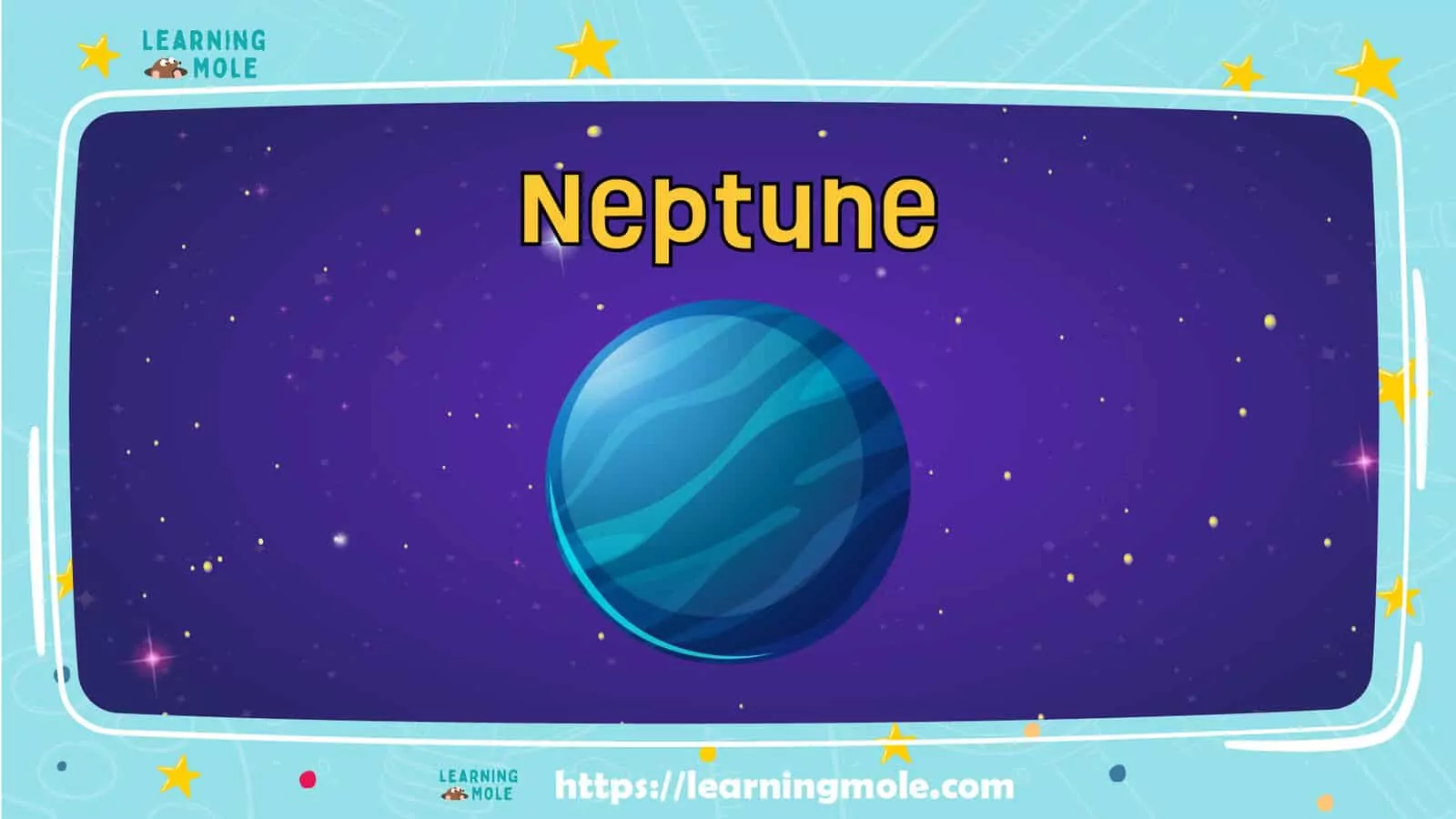
How Many Planets Have Life
Of course, the planet we will live on has life on it, but what about the other seven planets in the solar system? Can we live on some of the planets in the future or are there some planets that cannot support life?
Mercury
The planet Mercury is not supportive of life. Mercury is the closest planet to the Sun; therefore, it experiences scorching temperatures that are unbearable for humans to endure. Mercury also experiences freezing temperatures by night, these extreme temperatures would make life on Mercury impossible.
Venus
Although Venus is quite similar to Earth, it cannot support life. Venus is a very hostile planet. There is no evidence of water on Venus, therefore it is a very dry planet. The surface area of Venus is extremely hot, and its atmosphere is very thick, meaning that the air pressure on Venus’ surface is very high. These conditions would make life on Venus impossible.
Earth
Earth is the only planet on which we know that there have been plants and animals living. Earth is the right distance from the Sun, and it has a magnetic field or ozone layer that protects the Earth from harmful solar radiation. Earth orbits in the Goldilocks zone, which allows the planet to have water on its surface. Liquid water is necessary for life to survive.
Mars
For years, they have looked at the possibilities of life on Mars and since they discovered liquid water on the planet, scientists believe that someday Mars could support life. There are extremely cold temperatures and no air pressure on Mars. The planet Mars has very weak gravity. The planet Mars is also covered in red dust and many storms occur which can last over a month.
Jupiter
The planet Jupiter cannot support life as we know it. The conditions that we would have to endure on Jupiter would be far too harsh. Jupiter has many storms that swirl over the planet and its clouds are so thick that they do not allow sunlight to hit the planet. Jupiter also has extremely low temperatures and no liquid water, making it impossible to survive. Jupiter also has a much greater gravity than Earth.
Saturn
Saturn is a gas giant planet therefore it has no surface that could support life. It also has a very thick atmosphere that would make it impossible to live in. Life as we know it cannot be supported on Saturn, however it is believed some of Saturn’s moons can. It has been said that Saturn’s moon Enceladus could be capable of supporting life.
Uranus
Similar to Saturn, Uranus has no solid surface in which we could live on. Uranus has extreme temperatures with its outer layer experiencing very low temperatures and its inner reaching extremely high temperatures, making it impossible for it to support life.
Neptune
Since Neptune is the furthest planet away from the Sun, it is an ice giant and if we were to live on Neptune, we would experience freezing temperatures. Neptune also has no solid surfaces, another reason why life on the planet would be impossible.
Dwarf Planets
Dwarf planets are objects in the solar system that are similar to the eight planets but smaller than them, and they orbit the Sun. According to the International Astronomical Union (IAU), to name an object “a planet” it must orbit the Sun, be massive enough for its gravity to pull it into a spherical shape, and clear the area of its orbit from any debris. If a planet has failed to do so, they consider it a dwarf planet instead. Currently, there are five confirmed dwarf planets in the solar system, which are Pluto, Eris, Makemake, Haumea, and Ceres. In fact, there may be more dwarf planets that are not confirmed yet.
Pluto
Pluto is the largest dwarf planet and the ninth-largest object that orbits the Sun in the solar system. It is located beyond Neptune in an area called the Kuiper Belt. Pluto was discovered in 1930 and was considered the ninth planet in the solar system. However, in 2006, the IAU decided that it should be considered a dwarf planet instead. It is in fact the first object to be classified as a dwarf planet.
Pluto is smaller than Mercury, and even smaller than Earth’s Moon. Pluto’s surface consists of rock and frozen gases. Pluto is so far away from the Sun, so it is very cold and dark as it receives so little sunlight. It completes an orbit around the Sun in 248 Earth years, and it completes a rotation about its centre in about 6.5 Earth days. Pluto has five known moons named Charon, Styx, Nix, Kerberos, and Hydra.
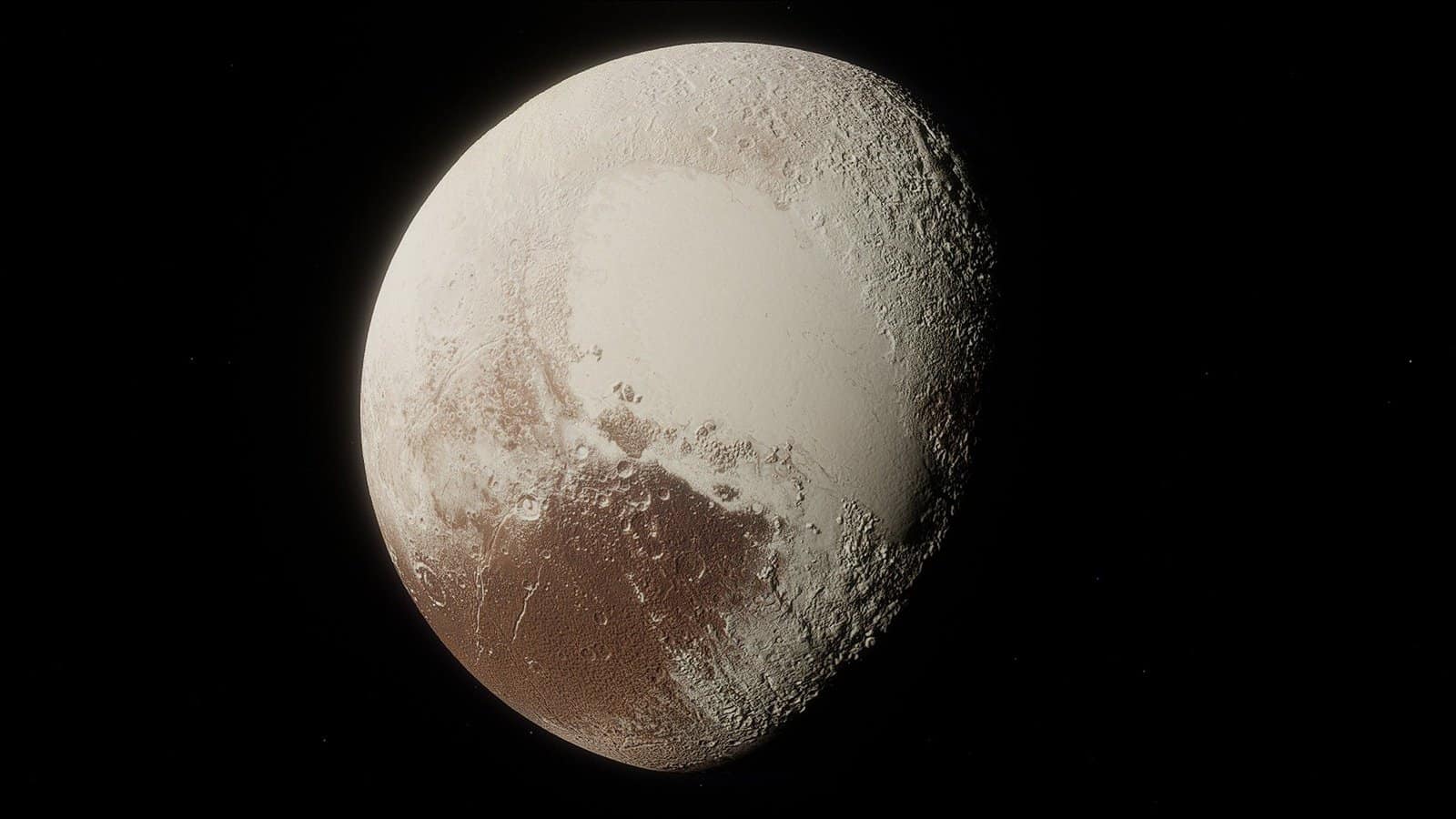
Asteroids
Asteroids are small chunks of metal and rock that orbit the Sun in the solar system. Scientists believe that these asteroids are debris left over from collisions between larger objects in the solar system. Most asteroids are less than hundreds of miles in diameter. From time to time, small asteroids fall to Earth or burn up in the sky forming glowing meteors. There are millions of asteroids in the solar system, most of which are found between Mars and Jupiter.
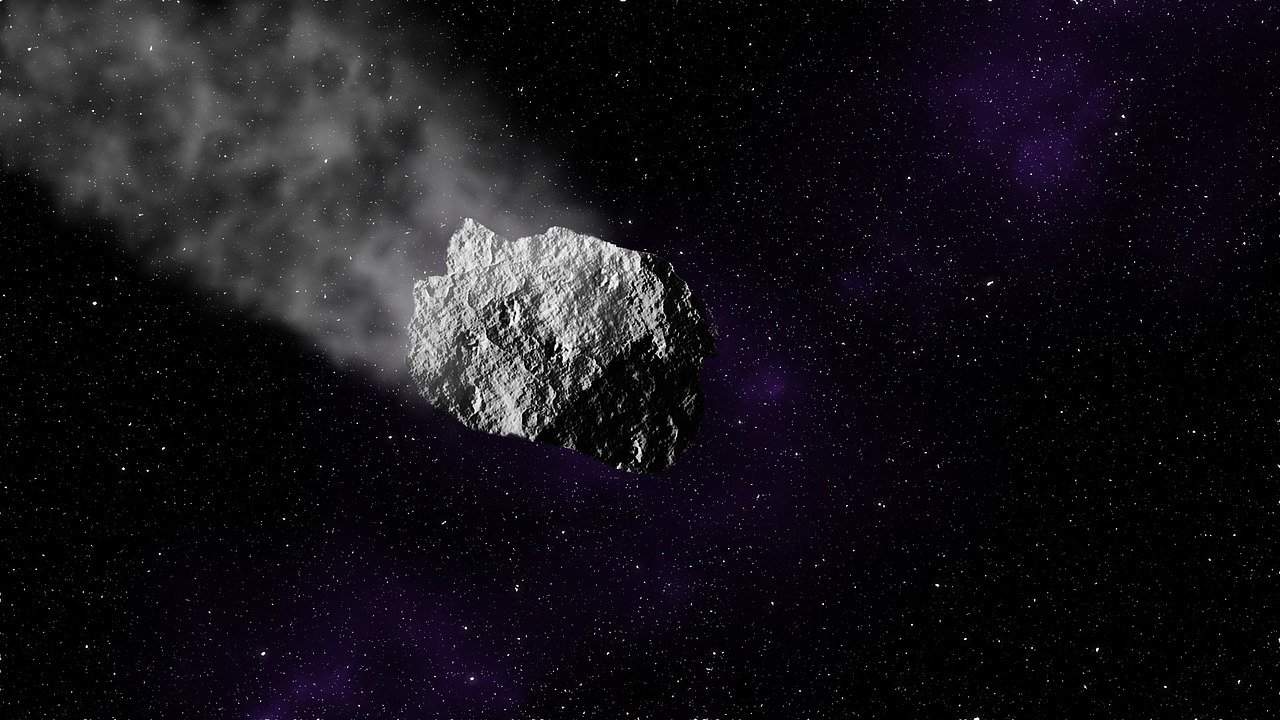
Comets
Comets are small chunks of ice and dust that orbit the Sun in the solar system. There are billions of comets in the solar system, but they are actually too small and far away to be seen from Earth. Their orbits are shaped like long ovals. Most comets take several years or even thousands of years to complete one orbit around the Sun. Sometimes dust from comets crashes into the atmosphere of Earth which causes them to burn up in the sky and create a meteor shower. Comets come from two regions in the outer solar system, which are the Kuiper Belt and the Oort Cloud.
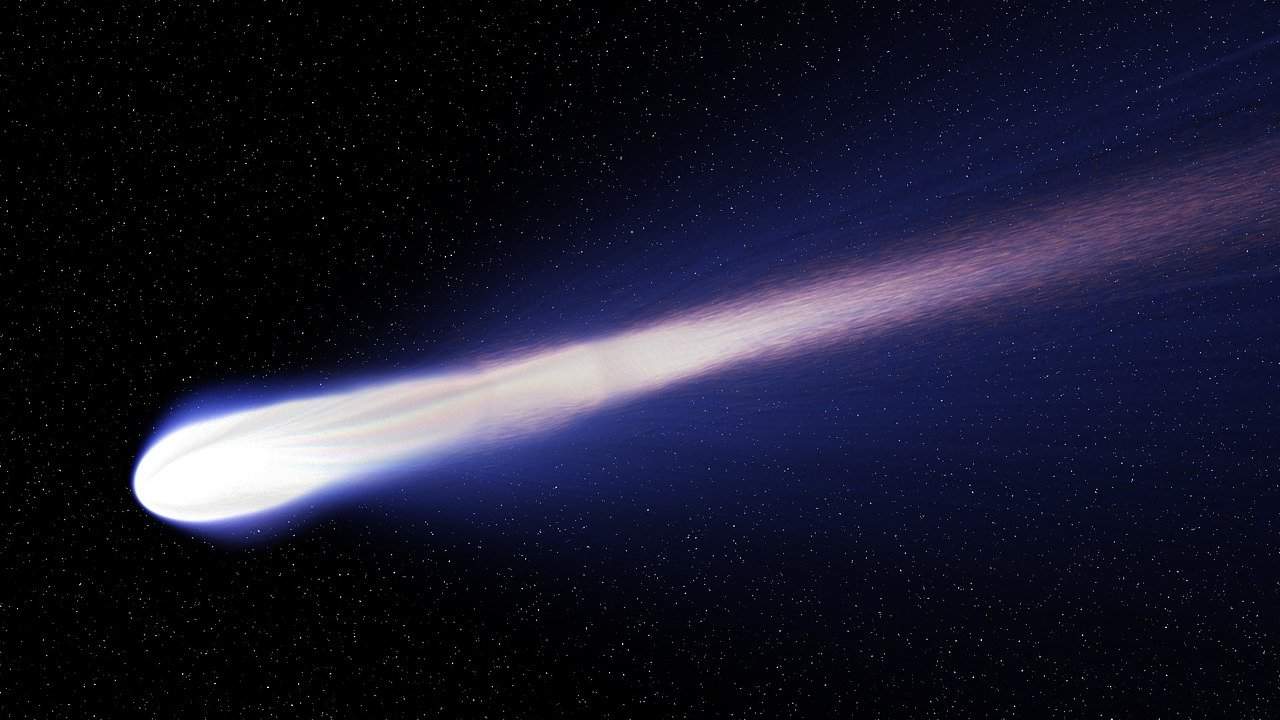
The Kuiper Belt
The Kuiper Belt is a very distant area in the outer solar system beyond Neptune. It contains countless small, icy bodies that orbit the Sun. The most famous object in the Kuiper Belt is the dwarf planet, Pluto. The Kuiper Belt also contains millions of comets.
The Oort Cloud
Scientists believe that the Oort Cloud is a region in the outer solar system even beyond the Kuiper Belt. It is a huge cloud that contains trillions of comets and icy objects. It surrounds the outside of the solar system. Scientists believe that most long-period comets in the solar system come from the Oort Cloud.
Meteors
When meteoroids enter the Earth’s atmosphere, they become known as meteors. When this occurs what we can see in the sky is a meteor streak. When a meteoroid goes through the Earth’s atmosphere and hits the ground it is known as a meteorite. A meteor shower occurs when the Earth passes through a trail of broken comet or asteroid debris. Meteor showers occur a couple of times a year and they are usually named after a constellation or star that is close to where the meteor shower appears in the sky. Two meteor showers that occur each year are the Perseids in August and the Geminids in December.
Meteors are known as shooting stars or also known as fireballs, which are larger explosions of light and colour that can usually last longer than an average meteor streak. Meteors are usually small in size, and some are even dust particles by the time they reach the ground. The biggest meteor on earth is the Hoba meteorite which was found in 1920 by a farmer in Namibia. The Hoba meteorite weighs over 60 ton. That is the same weight as 9 elephants!

45 Interesting Facts about Planets for Kids
- Mercury is the second densest planet in the solar system, after Earth, even though it is so small.
- Sunlight takes about 3.2 minutes to travel from the Sun to Mercury.
- Mercury is bright and it can be seen from Earth without a telescope.
- Although Mercury is the closest planet to the Sun, it is not the hottest planet. The hottest planet in the solar system is Venus.
- Venus and Mercury are the only planets in the Solar System that do not have any moons.
- Venus can be seen with the naked eye from Earth without a telescope.
- Venus shines so bright because it reflects most of the sunlight that it receives from the Sun.
- A space journey from Earth to Venus takes 6 months.
- Any spacecraft sent to Venus survives only for around an hour because of the hot temperatures.
- Venus is the planet that has the most volcanoes in the solar system. It has more than 1600 volcanoes, and some of them are active.
- Scientists call the distance between the Sun and Earth an “astronomical unit.” This unit is used to measure and compare great distances in space.
- Without the atmosphere of Earth, oceans would freeze and there wouldn’t be life on Earth anymore.
- Sunlight takes about 8 minutes to travel from the Sun and reach Earth.
- Earth’s moon is the fifth largest moon in the solar system.
- A spacecraft takes about 3 days to travel from the Earth to the Moon.
- Earth is so compact that it is actually the densest planet in the solar system.
- The Moon rises from the east and sets from the west, just like the Sun.
- The Moon is shaped like an egg.
- Most scientists believe that there is water on the Moon, but they are still researching.
- Earth’s moon is simply called “the Moon” because people did not know any other moons until 1610 when Jupiter’s first moons were discovered.
- Mars can be seen with the naked eye from Earth without any telescopes.
- There are pieces of Mars that have fallen on Earth.
- Mars has strong winds, and they are an obstacle for the spacecraft that scientists send from Earth.
- Mars has seasons like Earth, but they last longer than they do on Earth.
- Jupiter can be seen from Earth without a telescope.
- Every 13 months, Jupiter comes closer to Earth and becomes very bright in our night sky.
- A space journey from Earth to Jupiter takes around 13 months.
- Some scientists consider Jupiter a failed star because of its great mass. If Jupiter were 75 times more massive, it would become a star just like the Sun.
- Jupiter generates more heat than it receives from the Sun.
- Saturn is the least dense planet in the solar system and if you could put it in water, it would float.
- Saturn generates more heat than it receives from the Sun.
- The winds on Saturn are the second fastest winds of a planet in the solar system, after Neptune’s winds.
- The day “Saturday” is named after the planet Saturn.
- Uranus was the first planet that scientists discovered after the invention of the telescope.
- Uranus can sometimes be seen with the naked eye from Earth, but only on a very clear night sky.
- In 2033, Uranus will complete its third orbit around the Sun since its discovery.
- The moons of Uranus are all dark and frozen.
- The surfaces of the biggest moons of Uranus together are smaller than the continent of Australia.
- Both Uranus and Neptune share similar compositions, so scientists classify them as “ice giants.”
- Neptune is the only planet that cannot be seen from Earth with the naked eye. It can only be seen with the use of a telescope.
- One of Neptune’s moons, called Triton, is the coldest object in the solar system.
- Pluto, Venus, and Uranus rotate from east to west. This is called a retrograde rotation.
- Pluto is tilted, meaning that it rotates almost on its side.
- Pluto passes inside the orbit of Neptune when it comes closer to the Sun.
- Although Pluto is farther from the Sun than Neptune, it gets closer than Neptune to the Sun during its orbit.



Leave a Reply